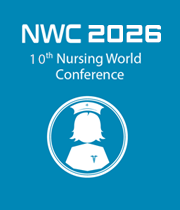Title : Epidemiological research and applications in public health
Abstract:
Introduction: Epidemiological research is a part of public health and health service’s research. This is carried out with human participants or data or biological samples from them. This provides important new knowledge that is not readily obtainable in other ways. The main purposes of epidemiological research are:
- Improving health and welfare in human population.
- Improving the efficiency and performance of human health services.
Epidemiology research is a search for causes and risk factors of diseases. Laboratory science combines with epidemiology to provide the evidence for causation. For Example: A team of epidemiologists were able to identify a variety of risk factors during an outbreak of ‘Pneumonia’ among person attending the American Legion Convention in 1976. From these findings and the bacillus identified in the laboratory 6 months later, the syndrome called Legionnaires disease came into being. 1. Laboratory science is a part of epidemiological research 2. Epidemiological studies: a) Observational studies b) Descriptive studies c) Intervention studies (Randomized clinical trials (RCT’s) Goal for Epidemiological research: To reduce morbidity or mortality from diseases by detecting them in their earliest stages, where treatment is more successful. Categories of information collected in Epidemiological Research: In epidemiological research, medically relevant information about individuals and groups are accumulated. This includes the use of the following types of data: (I) Identified: Data that allows the identification of a special individual called identified data - Examples are the individual name, date of birth and address. (II) Potentially identified: (coded, re- identified) Data may have identified removed and replaced by a code. In such case, it is possible to use the code to re-identify the person to whom the data is related. (III) De-Identified (not re-identifiable, anonymous) The process of de-identification can be irreversible if the identifiers have been removed permanently. Sets of data from which only names have been removed, remain. ‘Potentially identified’. Application in Public Health: Epidemiology studies help to assess the health needs of community by 1. Providing a detailed description of the health of the population. 2. Identifying the population at greatest risk of acquiring a particular disease, target groups, prevalent health groups etc... 3. Providing important clues to the causes of the disease.
Descriptive epidemiological study provides data on:
• Whether the health services are available, accessible, effective and efficient.
• Analytical studies are used in public health:
• To identify the association between exposures and outcomes.
• To test the hypothesis about casual relationship.
• To confirm etiological basis of a disease.
Long term studies help:
• To predict future incidence of a disease.
• To suggest what caused an increase or decrease in the occurrence of a disease, when related events took place.
Conclusion:
• The greatest strength of a epidemiological studies are which provides high reliability and accuracy of the study results.
• The profile nurses in 21st century have to work with their hearts and minds. They expected to identify actual and potential health problems of the clients and develop research based strategies to prevent to ameliorate and comfort to clients.
• Today Epidemiological research is most warranted to promote health status of our country.
Take Away Notes:
• To detect early warning signals of impending outbreaks
• To help initiate an effective response in a timely manner
• To provide essential data to monitor progress of an on-going disease control program
• To help and allocate health resources more optionally (WHO)
• To improve the information available to government health services and private health care providers on a set of high priority diseases and risk factors
• Utilize the information to improve the on-the-grand responses to such diseases and risk factors
• Epidemiological studies contribute in clinical decision making and individual decision about the particular disease • To detect early warning signals of impending outbreaks
• To help initiative an effective responses in a timely manner
• To provide essential data to monitor progress of an on-going disease control program
• To plan and arrange health awareness program to the public
• To help and allocate health resources more optionally in collaboration with World Health Organization or other National Health Service Organization



